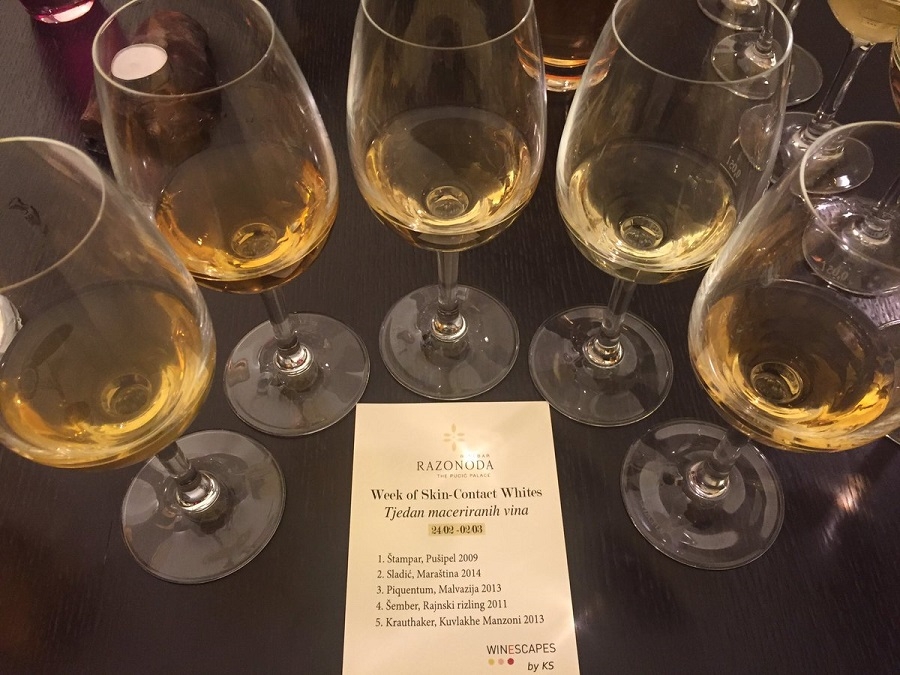Continuing our look at the grape varieties of Croatia on August 2, 2016 – maraština.
The variety known as maraština is one of many names: it is so abundant and so easy to cultivate that it can be found throughout the Mediterranean, including most of the Croatian coast (except for Istria), and is called rukatac (in the south of Dalmatia), krizol (on Cres Island), višana, malvasia del chianti (yes, exactly that chianty, the red wine that goes oh-so-well with liver and fava beans, was traditionally actually a blend containing 2 red varieties and 15% of malvasia del chianti), malvasia bianca lunga in Italy, pavlos in Greece etc.
So, we really couldn’t really say that maraština is an indigenous wine variety in Croatia, but it has traditionally been grown here and it was only recently shown that it’s genetically the same as all those other varieties. Additionally, some experts believe that it actually is a variety that originated here, but was spread throughout the Mediterranean because of its features and quality. These days, you’ll be able to find maraština mostly in the south, on the island of Korčula, peninsula Pelješac and Konavle region, and islands of Lastovo and Mljet still have small maraština vineyards, and the region around Zadar is working on branding their local maraština as well.
The grapes ripen rather late, consistently give rather high yields, and the sugar content is high when grown on the best possible locations – that should be expected at the positions where it’s grown today, where it gets quite a lot of sun. It has traditionally been used to complement other wine varieties, but when made into wine on its own, it makes a typical southern white wine. Sometimes it’s called “a female wine”, because it’s fragrant and fruity (apricot-y and peach-y), golden yellow colour, full-bodied with hints of vanilla, quite low alcohol content and low acids (that is the reason why it’s so often blended with other varieties that have higher acids).
It should be served not too cold, around 10 °C, and can be enjoyed as an easy drinking wine on its own, or with seafood, salted anchovies, various risottos or goat cheese. Also, maraština is one of the best Croatian wine varieties for making dessert straw wine using passito method (in Croatian it is called prošek, not to be mistaken with Italian prosecco), and most prošek wine made in the south has maraština in it. Some winemakers call their product maraština, other call it rukatac: pure maraština is sold by Crvik and Bratoš families in Konavle and Vinoplod Šibenik (where it’s made using sur lie method). You will be able to find more wine types sold under the name rukatac: Šarić family vinery and Saint Vicenco vinery from Lastovo; Bartulović, Antunović, Grgurević (where the wine is called Barrlie) family wineries on Pelješac; PZ Čara, Toreta and Milina wineries on Korčula.











